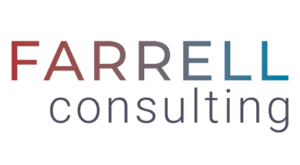by Patrick Farrell
Among the challenges change activists face is the seemingly unmovable “status quo”.
Often current practices and behaviors are widely accepted and form a basis for members of an organization to develop expectations for the future, their own and that of the organization. Change that involves modifying this current array of policies and practices (the status quo) can seem impossible. An unspoken expectation is that to enable a shift away from the status quo will require clear, comprehensive, and convincing evidence that the status quo has failed. In my experience, that is unlikely.
I suggest a somewhat different framing of the challenge of questioning current policies and practices, that I think allows options for challenging a current status quo, other than a frontal assault with rational arguments.
In price negotiations, there is a term called “anchoring”.
A first credible number named as part of a price negotiation has the benefit of establishing a reference price (anchoring) and the validity of that reference is rarely questioned. In fact, that initial reference can remain as a comparison throughout a price negotiation, leading to a buyer feeling they got a great deal (maybe much less than that anchor price) or not. An example is price negotiation when purchasing a car. An often-quoted reference price is a “sticker price” which the manufacturer helpfully prints and sticks on the vehicle. As an independent company, the car dealer can sell the car for any price they choose—but the sticker price has helpfully anchored the subsequent conversation with the buyer about what the car is “worth”, what the buyer might pay, and what the dealer might accept. One buyer response to this single-sided price anchoring is to introduce additional credible price anchors—like invoice price and average price from other local car dealers. Arguing that the sticker price should be ignored is probably useless—and maybe not true—but insisting there are other legitimate reference prices to be considered as well, is a sensible response and reduces the importance of the single anchor—sticker price—to one of several relevant pieces of information, all of which could be considered in the discussion.
What does this have to do with change and the status quo? Think of the status quo in your organization as the sticker price. It is a relevant reference for what the present and future of your organization might be, and often it is the only widely discussed reference point. Can we introduce other relevant and widely accepted reference points that might diverge from the accepted status quo, not to negate the status quo, but to offer alternative reference perceptions? If we can identify and clearly name these alternative perceptions, and particularly if they are already embedded in our organization like the status quo is, we can now have a broader conversation of possible futures.
Rather than fighting it, add to the status quo
Most organizations I know survive and even thrive carrying a number of seemingly unaligned perspectives and aspirations. In higher education (my background) these might include a desire to preserve traditions that have proven successful in the past, aspirations for higher ranking (US News, THE/WSJ… take your pick) and a desire to serve a broader demographic of students than had been the institution’s history. These three are not necessarily contradictory, but they can frequently conflict with each other in terms of decisions needed to make them happen. In this example, one of these, say historical tradition, might be perceived as the dominant “status quo” anchor, but the others already exist in the organizational culture and are widely accepted. If brought forward as additional views of “status quo”, organizational decision making around change doesn’t need to solely reference tradition, but can acknowledge a number of reference points that need to be considered and may result in decisions that are not aligned with only one of the reference views.
Enabling multiple status quo perspectives builds a better change agenda and support for change.
In my experience, winning a rational argument about the shortcomings of a widely accepted organizational status quo is a fool’s errand. A more effective approach is to elevate additional “status quo” perspectives already present in the organization’s culture to reduce the power of a single status quo reference, and make it one of several references. In that situation, proving the current status quo to be wrong is unnecessary, and time and energy will be better spent developing a change agenda that recognizes multiple perspectives on the organization’s present, and consequently multiple perspectives on the organization’s future.



